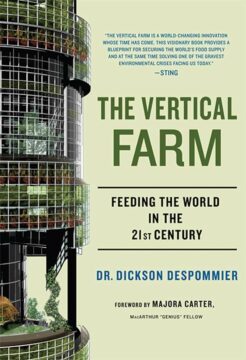Jon Michaud at The New Yorker:
 In 2000, Dickson D. Despommier, then a professor of public health and microbiology at Columbia University, was teaching a class on medical ecology in which he asked his students, “What will the world be like in 2050?,” and a follow-up, “What would you like the world to be like in 2050?” As Despommier told The New Yorker’s Ian Frazier in 2017, his students “decided that by 2050 the planet will be really crowded, with eight or nine billion people, and they wanted New York City to be able to feed its population entirely on crops grown within its own geographic limit.” The class had calculated that by farming every square foot of rooftop space in the city, you could provide enough calories to feed only about two per cent of the 2050 population of New York.
In 2000, Dickson D. Despommier, then a professor of public health and microbiology at Columbia University, was teaching a class on medical ecology in which he asked his students, “What will the world be like in 2050?,” and a follow-up, “What would you like the world to be like in 2050?” As Despommier told The New Yorker’s Ian Frazier in 2017, his students “decided that by 2050 the planet will be really crowded, with eight or nine billion people, and they wanted New York City to be able to feed its population entirely on crops grown within its own geographic limit.” The class had calculated that by farming every square foot of rooftop space in the city, you could provide enough calories to feed only about two per cent of the 2050 population of New York.
Urban farming was a good idea, Despommier thought, but his students hadn’t taken it far enough. “What’s wrong with putting the farmer inside the building?” he asked them, remembering that at the time there were “hundreds to perhaps thousands” of empty buildings in New York City. Throughout the next decade, as he continued to teach the class, Despommier and his students developed this idea—including the use of cultivation techniques that required little or no soil—culminating in the 2010 book, “The Vertical Farm: Feeding the World in the 21st Century.”
more here.
